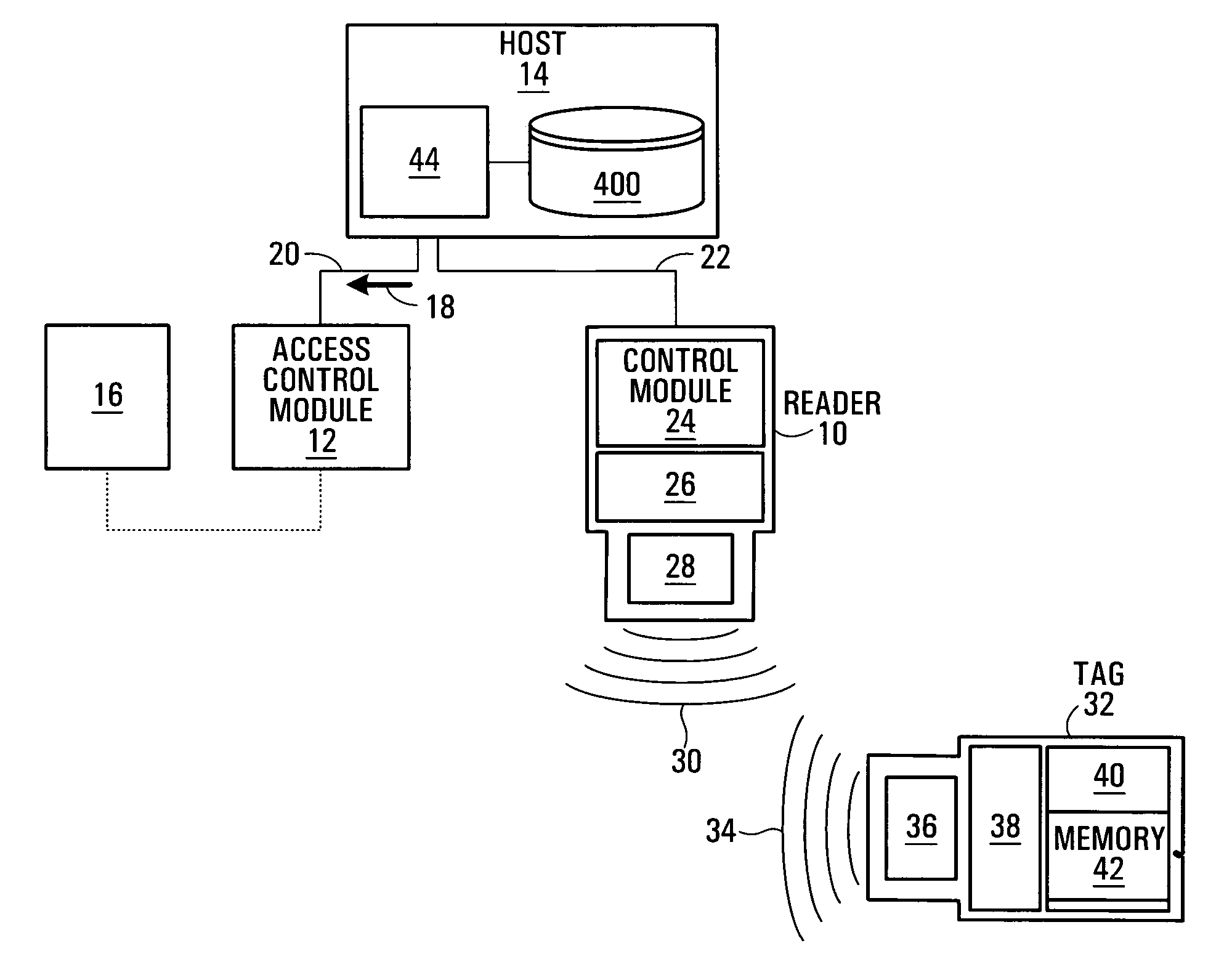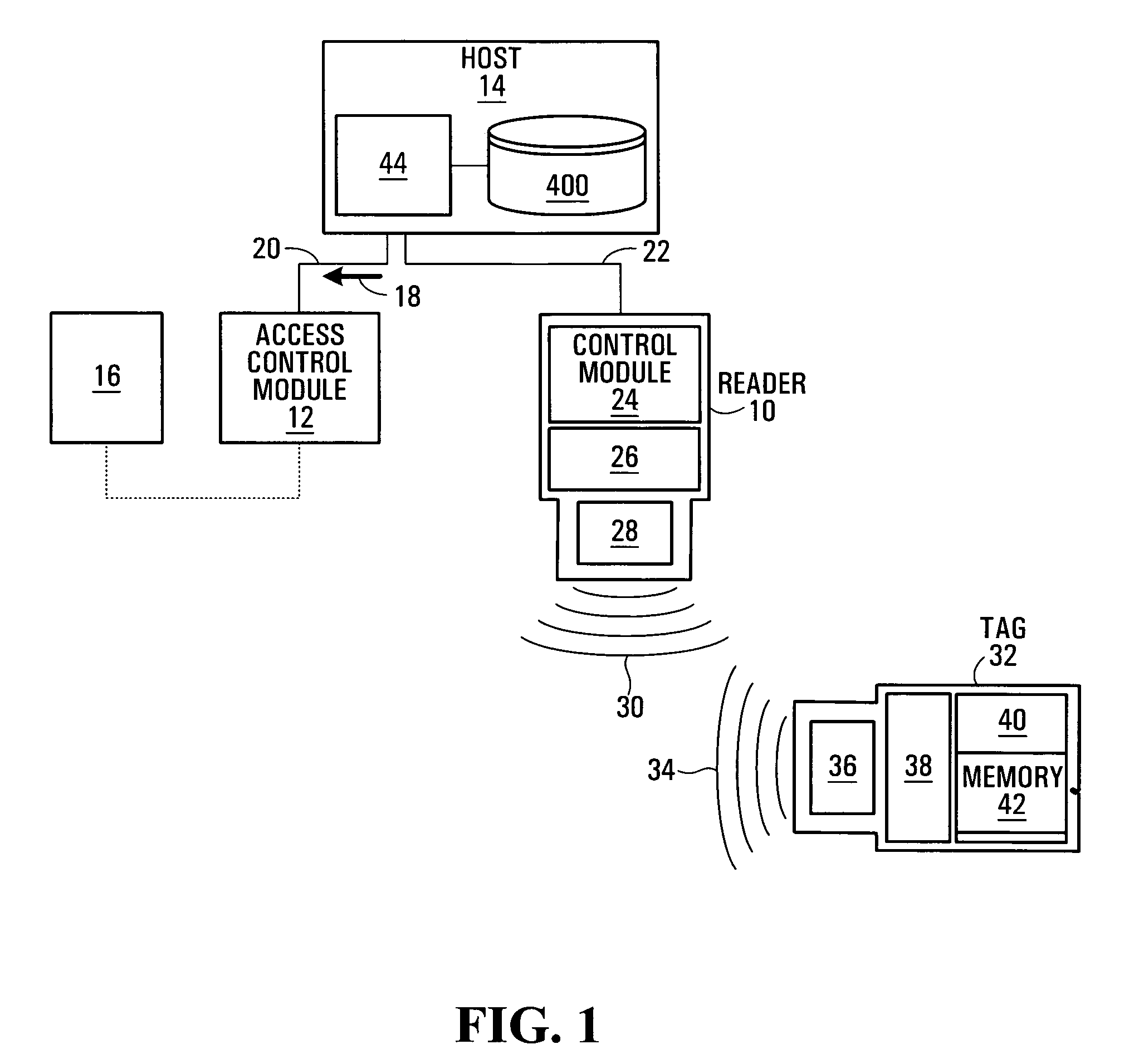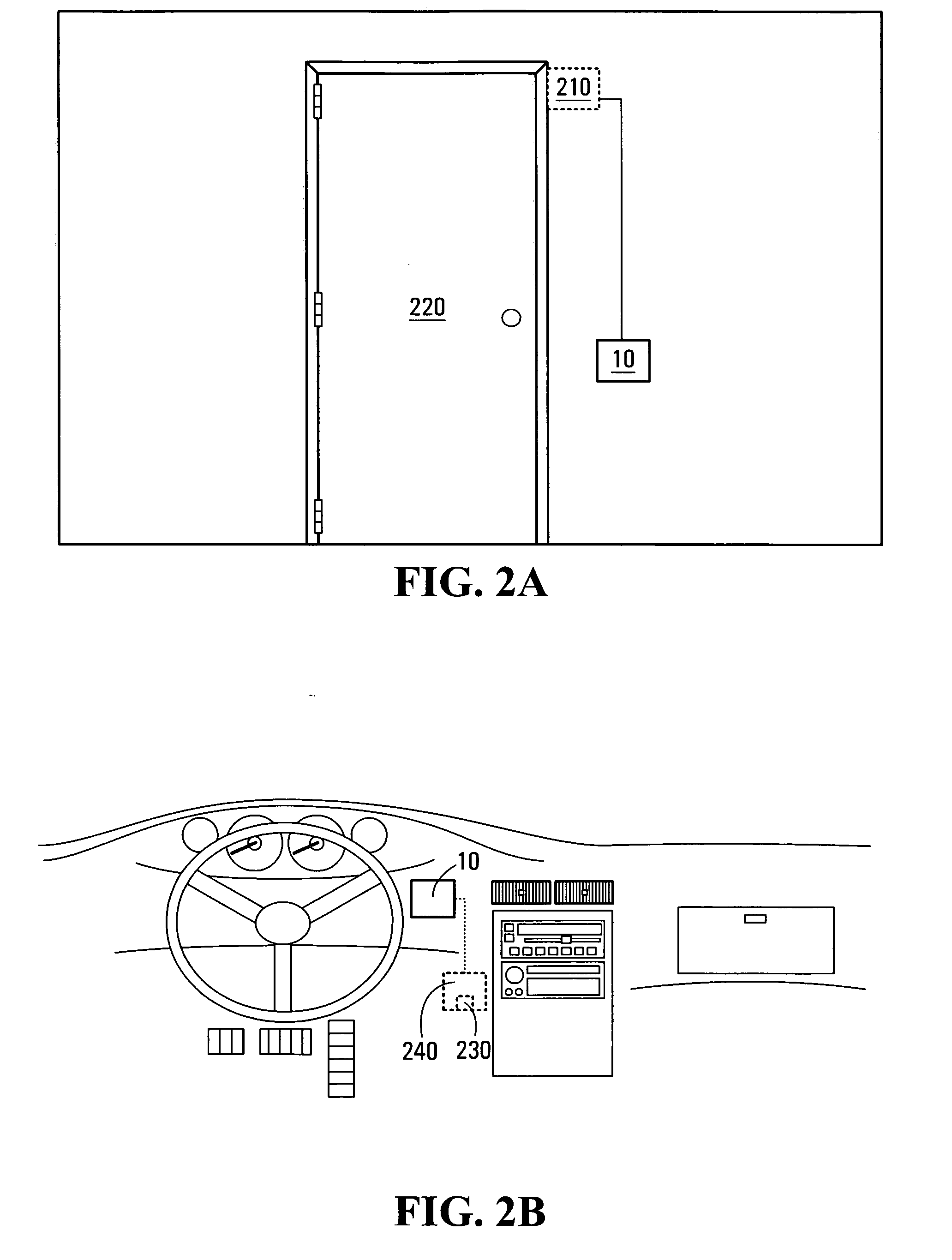User authentication for contact-less sytems
a technology of user authentication and contact-less systems, applied in the field of contact-less access control systems, can solve the problems of volume, expected to arise, and inability to reproduce the encrypted user id required to permit access to the building or the vehicl
- Summary
- Abstract
- Description
- Claims
- Application Information
AI Technical Summary
Benefits of technology
Problems solved by technology
Method used
Image
Examples
Embodiment Construction
[0029] With reference to FIG. 1, there is depicted an access control system comprising an RFID reader 10 (hereinafter referred to simply as a “reader”), an access control module 12 and a host computer 14. The access control module 12 is a device which, upon receipt of a command 18, permits access to, or usage of, a resource of interest 16. Examples of the resource of interest 16 include but are not limited to a vehicle engine, vehicle functionality (e.g. braking, ignition, gears), machinery, electronics, a building, a door (such as a door to a restricted area), a computer, a computer network, a personal digital assistant, a telephone, an Automatic Teller Machine, a switching mechanism for an electric light, a point-of-sale (POS) terminal, and so on. A specific non-limiting example of a POS terminal includes a Dexit™ reader for reading Dexit™ tags, and available from Dexit Inc., P.O Box 326, Toronto, Ontario, Canada, M5X 1E1, www.dexit.com.
[0030] A specific non-limiting example is s...
PUM
 Login to View More
Login to View More Abstract
Description
Claims
Application Information
 Login to View More
Login to View More - R&D
- Intellectual Property
- Life Sciences
- Materials
- Tech Scout
- Unparalleled Data Quality
- Higher Quality Content
- 60% Fewer Hallucinations
Browse by: Latest US Patents, China's latest patents, Technical Efficacy Thesaurus, Application Domain, Technology Topic, Popular Technical Reports.
© 2025 PatSnap. All rights reserved.Legal|Privacy policy|Modern Slavery Act Transparency Statement|Sitemap|About US| Contact US: help@patsnap.com



